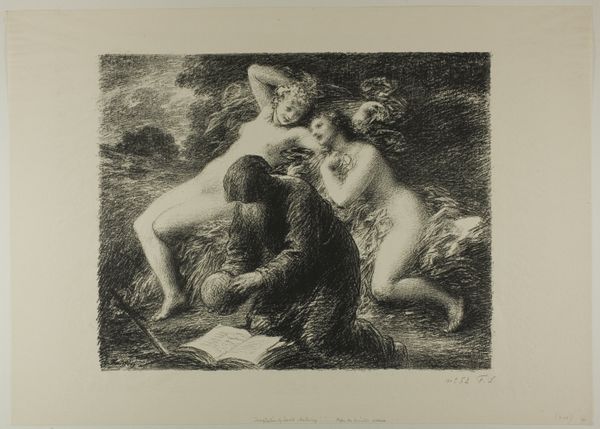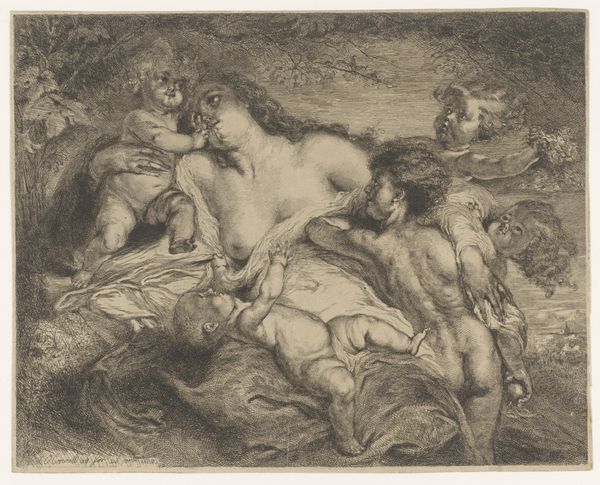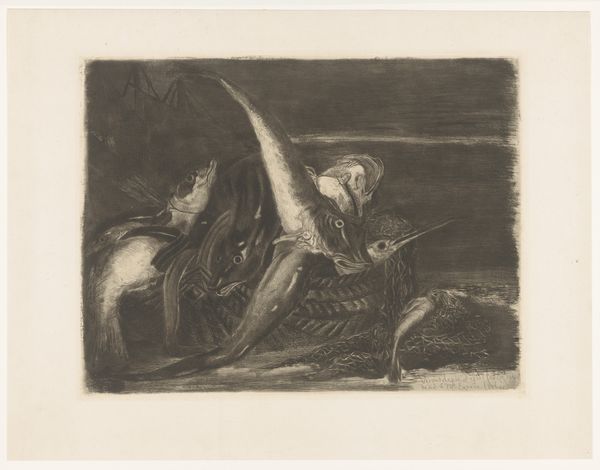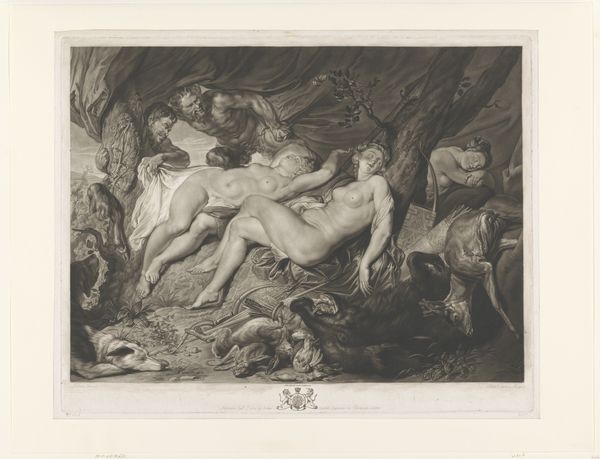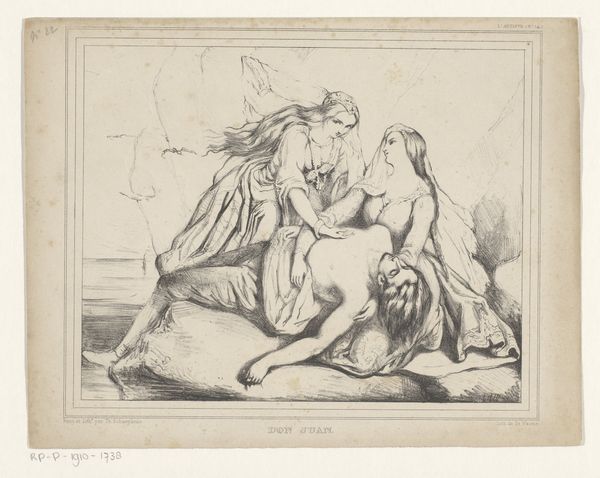
print, etching, intaglio
# print
#
etching
#
intaglio
#
old engraving style
#
charcoal drawing
#
figuration
#
symbolism
#
history-painting
#
nude
Dimensions: height 432 mm, width 620 mm
Copyright: Rijks Museum: Open Domain
Curator: This print, "Twee naakte figuren met elkaar in strijd," or "Two Naked Figures Fighting," by Henri de Groux, produced sometime between 1877 and 1930, certainly commands attention with its raw energy. What are your initial thoughts? Editor: The dynamism is striking. It looks like some kind of struggle rendered in intaglio and etching—I can practically feel the tension and weight of that body on top. What process was involved to produce this image? Curator: Well, de Groux was known for his Symbolist leanings, and this work really exemplifies that. The use of the nude form here immediately connects us to art historical traditions, of course, but I see in it an allegory for power, perhaps male aggression and domination within broader sociopolitical struggles. Editor: You see the theme of domination through that theoretical lens, while I look at the labor required to execute this very image; consider the acid baths for etching, and the physical tools used for marking the plate, allowing de Groux to probe and incise that fierce dynamism you described. There’s a material tension as much as a thematic one, isn’t there? Curator: Indeed. And even the ambiguous date range—spanning several decades—raises questions about the context in which this conflict might have been relevant. Is it commenting on class warfare? Or a broader, perhaps personal, statement about human brutality? It could even speak to our understanding of masculine toxicity, if you consider gender as a socially-constructed and enacted power dynamic. Editor: Given its visual links to much earlier traditions in printmaking, what's fascinating here is the potential tension between those classical forms and a much more modern mode of production, making images available and affordable, to some degree, at scale. It underscores, to me, how an image travels and circulates—carrying that struggle—even today. Curator: Absolutely. Considering all the elements, the tension between the forms and what it suggests, I believe it allows us to investigate violence through visual language. Editor: Right. From process to circulation, these images give an artifact and voice to how social meaning can persist over decades through artistic materials.
Comments
No comments
Be the first to comment and join the conversation on the ultimate creative platform.


